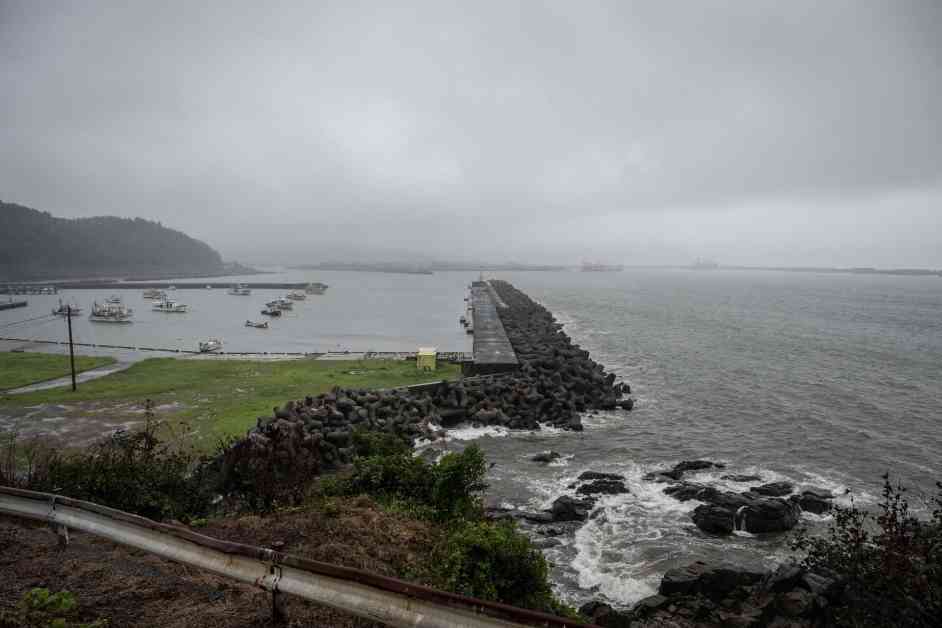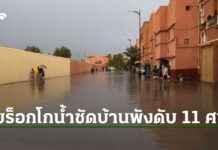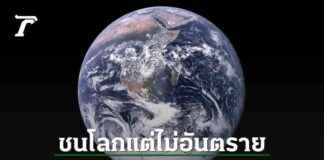The Japan Meteorological Agency reported on Monday, August 12, that tropical storm ‘Eri’ had hit the northern coast of Japan, causing heavy rainfall in some areas. The storm made landfall at around 8:30 am local time near the city of Ofunato in Iwate Prefecture. Fortunately, there were no reports of injuries or damage to structures. The local government advised residents to evacuate approximately 315,000 people from the area overnight, with around 2,000 people currently staying in evacuation centers in the region.
Tropical storm Eri was initially classified as a ‘severe tropical storm’ close to typhoon status, but it was downgraded to a ‘tropical storm’ on Monday afternoon due to some loss of strength. The storm brought rainfall of 368 millimeters (14 inches) in the span of 24 hours until Monday morning in Kujira, marking the highest amount of rainfall since the Japan Meteorological Agency began recording data in 2521. Normally, the average monthly rainfall for this area in August is 177.9 millimeters.
The city of Kujira issued urgent warnings to around 8,300 residents living along the riverbank to be vigilant and prepare for evacuation as nearby dams began releasing water to prevent flooding. The Japan Meteorological Agency warned that people in affected areas should be cautious of landslides, rising river levels, flooding, as well as strong winds and high waves.
By noon local time on Monday, tropical storm Eri had moved north of Hanamaki in Iwate Prefecture, causing strong winds of up to 108 kilometers per hour and moving northwest at a speed of 20 kilometers per hour. Japan Airlines reported cancellations of flights to the northern region and 78 domestic flights, affecting 7,039 passengers. ANA also canceled 8 flights. Train services in the region were suspended in some areas, but the Shinkansen bullet train system continued to operate normally.
Scientists predict that the storm will pass through Japan and head out to the Sea of Japan by Monday evening. The changing climate conditions have led to severe weather patterns, including heavy rainfall and more frequent and intense tropical storms. Residents are advised to stay updated on the latest weather information and take necessary precautions to ensure their safety during this historic event.



















